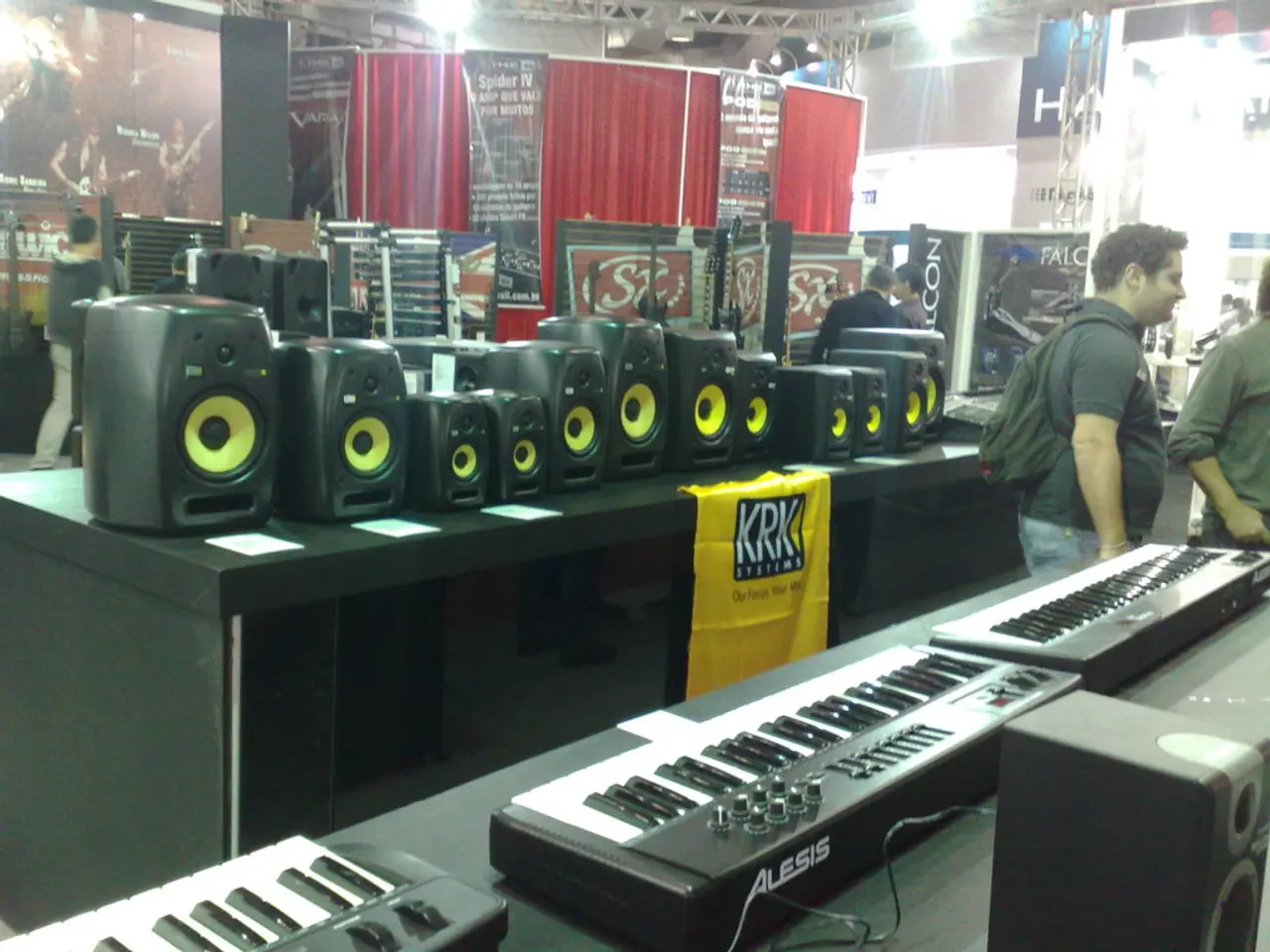Are Chinese consumer brands posing a threat to the dominance of international brands in global markets?
In a surprising turn of events, the electric-vehicle industry witnessed a significant shift in Q3, with Chinese manufacturer BYD overtaking Tesla in terms of revenues [1][4]. This is just one example of how Chinese consumer brands are making their mark on the global stage, competing fiercely with Western brands in various sectors, including coffee, electric vehicles (EVs), and fast fashion.
China's unique innovation ecosystem, massive manufacturing capabilities, and rapid digital transformation are key factors behind this rise. With over 400 million sophisticated consumers and extensive manufacturing capabilities that produce 60-70% of the world’s appliances and electronics, China serves as a global testbed for consumer product innovation [1]. Brands refine products domestically before scaling globally, cutting costs and perfecting technology.
Digital prowess is another strength of Chinese brands. Rapid digital transformation, especially social commerce driven by platforms like TikTok, empowers Chinese brands with fast, influencer-powered product discovery and online sales growth. Using e-commerce to expand in Southeast Asia and beyond allows Chinese brands to capture market share quickly, often by acquiring rivals [2].
Competitive pricing and quality are also advantageous for Chinese brands. Many offer products comparable in quality but at significantly lower prices than Western or regional incumbents. For instance, Luckin Coffee overtook Starbucks in China by providing similar drinks at half the price, with smoother digital ordering and faster service [3]. Chinese brands' pricing power and speed of innovation challenge Western brands like Apple and Starbucks.
Leading brands such as Luckin Coffee, Heytea (coffee/tea), BYD (electric vehicles), and Urban Revivo (fast fashion) are aggressively expanding into new markets, including Southeast Asia, the US, Europe, and the Middle East [3][4]. This aggressive expansion strategy, combined with innovative business models and local adaptations, fuels their rising global competitiveness.
China is moving beyond being the "world's factory" toward building consumer-facing global brands. The shift from manufacturing to branding is shedding the "made in China" cost-focused image by emphasizing innovation, design, and digital engagement [1][5].
The coffee market is set to become more competitive with the entry of China's largest chain, Luckin Coffee, into the US market next year. Luckin Coffee plans to undercut the big US chains by selling coffee in the $2-$3 price range [3].
China's home-grown brands are not just a challenge in the coffee and EV sectors. Chinese plane manufacturer Comac is ramping up production and could soon be as familiar as Boeing and Airbus. Chinese electric cars have not been slowed down by tariffs and are often perceived as better and cheaper than Western models.
As of now, Luckin Coffee has more than 20,000 outlets in China, more than Starbucks' 7,000 outlets in China and closing in on Starbucks' 38,000 outlets globally [3]. The Chinese market uses the same currency and payment systems, providing a strong base for funding expansion overseas.
The fight between Western and Chinese consumer brands is just beginning. Despite the slowing Chinese economy, it remains the second-largest in the world, presenting a significant challenge to Western consumer brands. Western multinationals often overlook China as a source of fresh ideas and innovative consumer brands, a mistake that could cost them dearly in the years to come.
[1] https://www.wsj.com/articles/china-s-consumer-brands-are-on-the-rise-11613624612 [2] https://www.forbes.com/sites/forbesasia/2021/04/06/chinese-e-commerce-giants-are-going-global-will-they-dominate-the-west/?sh=71638832764c [3] https://www.reuters.com/article/us-china-consumer-brands-idUSKBN2BJ1HF [4] https://www.cnbc.com/2021/03/08/chinese-brands-are-expanding-globally-but-they-still-have-a-long-way-to-go.html [5] https://www.cnbc.com/2019/05/21/china-is-trying-to-shake-off-its-made-in-china-image.html
- Chinese brands, such as Luckin Coffee, BYD, Heytea, and Urban Revivo, are not limited to challenging Western brands in the coffee and electric vehicle sectors; they are also expanding into fast fashion, aiming to capture market share worldwide [3][4].
- The unique innovation ecosystem, digital prowess, competitive pricing, and quality of Chinese brands have enabled their rapid expansion into various sectors, including food-and-drink, technology, education-and-self-development, and casino-and-gambling, posing a significant challenge to Western brands [1][2][3][5].
- Chinese brands are leveraging their extensive manufacturing capabilities to refine and perfect technology, before scaling globally, thereby reducing costs and gaining an edge over Western competitors [1].
- Interestingly, China's home-grown brands are utilizing their digital engagement, rapid technology innovation, and local adaptations to attract consumers even in sectors like general-news and sports [1].
- By offering products with comparable quality at lower prices, Chinese brands, like Luckin Coffee, are aggressively competing against Western incumbents, such as Starbucks, even in their home markets [3].
- In the future, we might witness Chinese brands like Comac competing on an equal footing with global players like Boeing and Airbus, in industries such as aviation, challenging the status quo [1].




